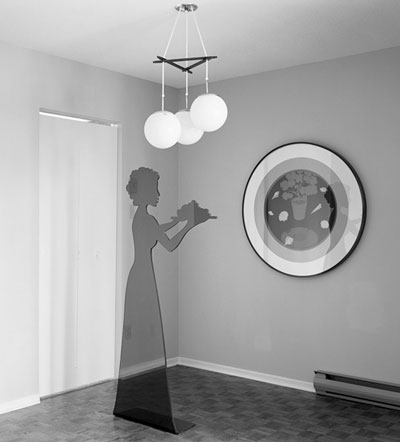
Lynne Cohen, Model Dining Room
Originally published in 1987 and described by David Byrne as the “flowering of our civilization,” the updated and expanded version of Lynne Cohen’s Occupied Territory offers a stark commentary on how we have—and have not—progressed in our occupation of the world. When compared with the original Occupied, the re-publication feels more representative of a de-flowering of civilization, or a glance at old magazines and newspapers that subtly hint at how we have arrived at our current social and political milieu.
The timely shift of the connotation of the word occupy—both in general terms and in relation to Occupied Territories—creates an interesting twist in the current significance of this work. In 1987, to occupy politically was an act of aggression, a means of control and domination. With the Occupy movement of 2011, the popular implication of occupation has come to be a mixture of hope, anger, and a determination to undo the management-centric, ultimately vapid cultural practices and social aesthetics Cohen captures in her work. The Occupy movement, with its fluid structure and spontaneity, seems in many ways a direct response to the hollow occupation Cohen’s photographs captured 25 years ago. The movement’s terms seem like an attempt to overcome it.




 Facebook
Facebook Permalink
Permalink Digg
Digg Reddit
Reddit LinkedIn
LinkedIn StumbleUpon
StumbleUpon Tumblr
Tumblr

